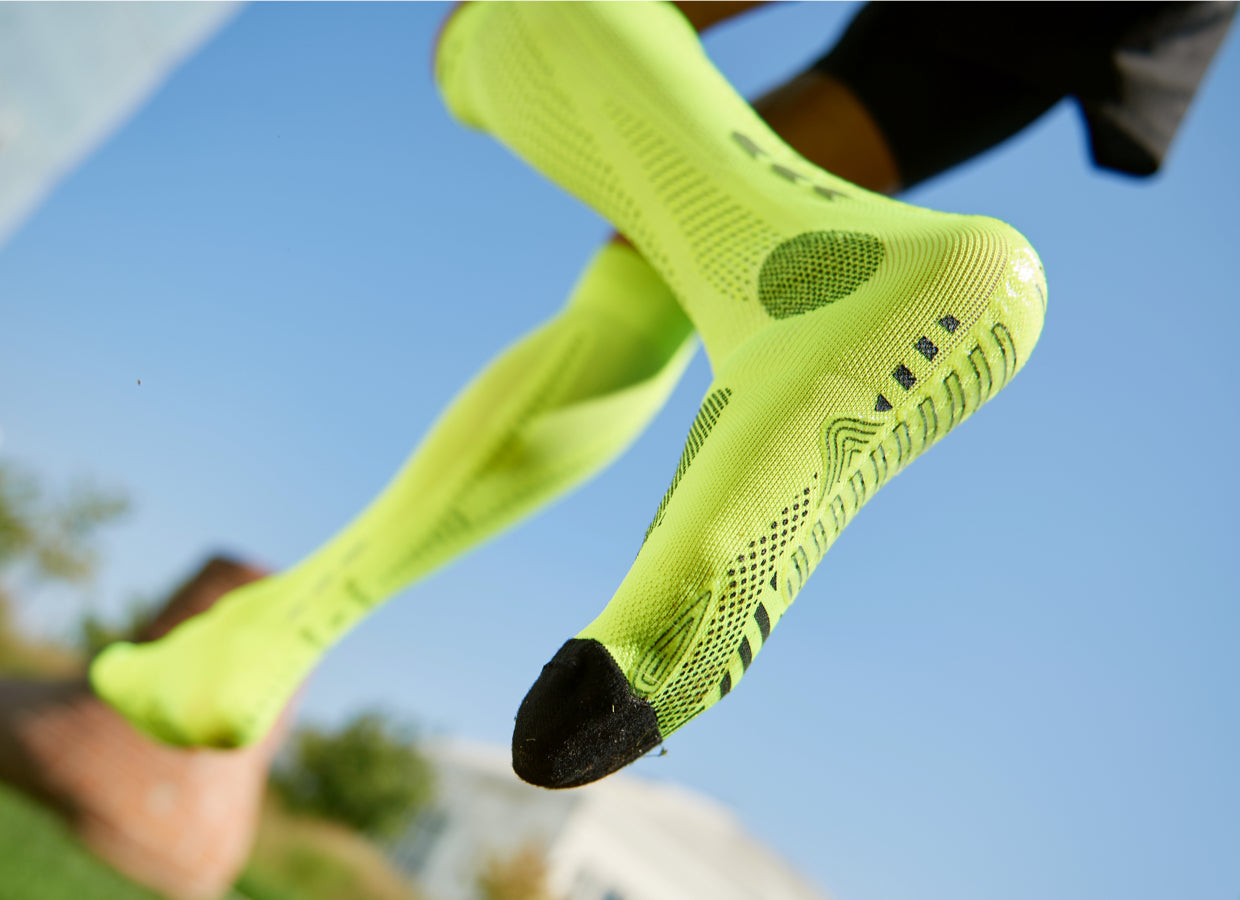It's a common and widely held belief that the buildup of lactic acid is responsible for the fatigue and muscle soreness experienced after intense physical activity. However, according to recent research, these issues, technically referred to as DOMS (delayed onset muscle soreness), are not actually linked to lactic acid. Instead, it's rapidly removed from the body shortly after exercise. Muscle soreness typically arises the day after or even two days after physical activity, especially if it involves efforts one is not accustomed to, intense physical exercise, or following a period of inactivity.
So, how does lactic acid form? And are there remedies for lactic acid in the calves and the alleviation of muscle soreness? The answer to these and other questions lies in the following paragraphs.
Definition of Lactic Acid and How It Forms
Lactic acid is produced in the legs even without exercise. Its production is indeed constant in our bodies and is related to the activity of muscle fiber contraction and relaxation: the more intense and prolonged the effort, the more lactic acid accumulates in the muscles. Contrary to popular belief, the accumulation of lactic acid is, according to recent studies, at most an indicator of muscle fatigue, but not the cause of the symptoms. It seems to play a neutral role or, according to some researchers, even a beneficial one in counteracting fatigue, protecting muscle function during activity, and promoting post-exercise recovery.
Lactic acid is the end product of the so-called "anaerobic glycolysis" process, i.e., the biochemical process that produces metabolic energy in the absence of oxygen: glucose is converted into pyruvic acid (or pyruvate), which, in the absence of oxygen, can be converted into lactic acid.
So why does lactic acid form after a workout? Its quantity increases when the muscle's demand for energy increases significantly and rapidly, or when muscle effort is prolonged. In these conditions, blood flow is unable to guarantee sufficient oxygen supply to the muscle cells, and the muscle is forced to produce part of the energy needed by exploiting anaerobic glycolysis.
Is it necessary to eliminate lactic acid from the legs?
Our body is perfectly capable of autonomously determining how to eliminate lactic acid in a few hours: within a maximum of three hours after the end of physical activity, lactic acid disappears completely from our body. A faster elimination, facilitated for example by cooldown exercises at the end of the workout, a warm bath or shower, or good hydration, would have no effect on the onset of muscle soreness. If the latter occur after physical activity or even in the days following, some advice to promote their disappearance are:
- Stop intense physical activity and train at low intensity, or focus exercises on non-sore muscle groups;
- If the pains are particularly significant, rest to allow the muscle to repair micro-traumas to muscle fibers;
- To alleviate symptoms and inflammation, apply cold packs to the affected areas;
- If the pains persist, take nonsteroidal anti-inflammatory drugs (NSAIDs). Paracetamol has no effect on lactic acid;
- If the problem is not resolved after 3-4 days, consult your attending physician for evaluation.
How to Increase Lactic Acid Tolerance
Those who practice certain types of running, swimming, athletics, cycling, team sports, and bodybuilding, identified as lactate aerobic anaerobic disciplines, work under conditions of maximum lactic acid production and need to optimally remove lactic acid at blood, muscle, and liver levels. One solution is to train with lactic acid, i.e., to choose targeted workouts to saturate the muscles with lactic acid, so that they get used to working under conditions of high acidity, while simultaneously improving blood acidosis neutralization. They come in two types:
- The first works on continuous effort (20-25 minutes) at heart rate values close to the anaerobic threshold.
- The second works with intervals: in athletics, 2-6 repetitions per 1-4 series of 150-400 meters at race pace or higher, interspersed with partial recoveries between repetitions (45-90 seconds) and complete recoveries between series (5-10 minutes).
FLOKY Biomechanical Socks for Recovery and Toxin Removal
In addition to specific training to improve lactic acid tolerance or medications for lactic acid in the legs, a good starting point to improve performance is to act on the foot to act on body health. Thanks to the development of innovative screen printing techniques, conceived on the principles of Biomechanics, FLOKY has created a revolutionary sock for the world of sports, capable of promoting performance improvement, preventing injuries, and speeding up recovery. The calf muscle compression provided by the Tape System, present on the socks, increases squeezing favoring the oxygenation of internal tissues.
Among technical sports socks, FLOKY's RE-CHARGE is the first biomechanical sock specific for post-training or competition recovery. It provides an improvement and regenerative support for all biomechanical functions related to tendons and foot and leg muscles, allowing the activation of venous return, the elimination of toxins responsible for muscle fatigue, muscle regeneration, and the discharge of tendons from overloads and inflammations. The inorganic compounds present in the sock interact with body heat, speeding up tissue damage repair, facilitating inflammation resolution, and stimulating microcirculation.




